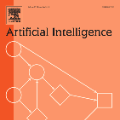This paper makes the opaque data market in the AI economy empirically legible for the first time, constructing a computational testbed to address a core epistemic failure: regulators governing a market defined by structural opacity, fragile price discovery, and brittle technical safeguards that have paralyzed traditional empirics and fragmented policy. The pipeline begins with multi-year fieldwork to extract the market's hidden logic, and then embeds these grounded behaviors into a high-fidelity ABM, parameterized via a novel LLM-based discrete-choice experiment that captures the preferences of unsurveyable populations. The pipeline is validated against reality, reproducing observed trade patterns. This policy laboratory delivers clear, counter-intuitive results. First, property-style relief is a false promise: ''anonymous-data'' carve-outs expand trade but ignore risk, causing aggregate welfare to collapse once external harms are priced in. Second, social welfare peaks when the downstream buyer internalizes the full substantive risk. This least-cost avoider approach induces efficient safeguards, simultaneously raising welfare and sustaining trade, and provides a robust empirical foundation for the legal drift toward two-sided reachability. The contribution is a reproducible pipeline designed to end the reliance on intuition. It converts qualitative insight into testable, comparative policy experiments, obsoleting armchair conjecture by replacing it with controlled evidence on how legal rules actually shift risk and surplus. This is the forward-looking engine that moves the field from competing intuitions to direct, computational analysis.
翻译:暂无翻译



